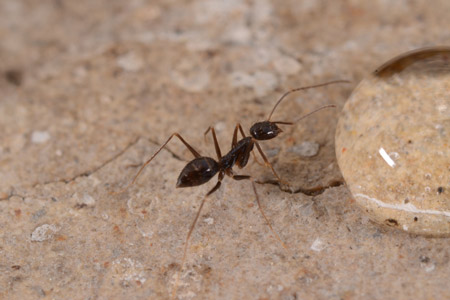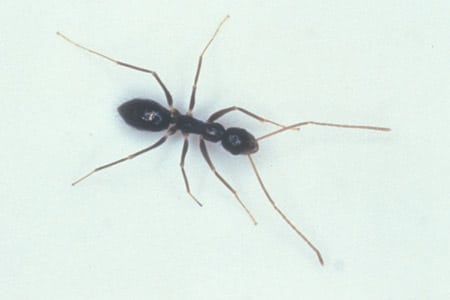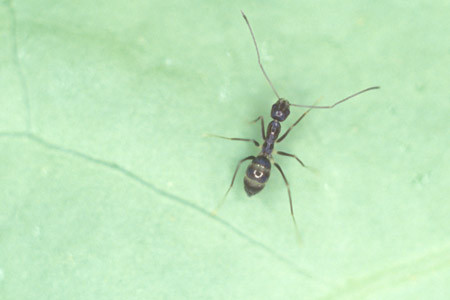Active Seasons




Crazy Ant Appearance and Size Facts
Crazy ants have earned their peculiar name due to their seemingly erratic and unpredictable-seeming movements. These invasive ants are native to South America but have spread to various regions worldwide, including the United States. Crazy ants measure about 1/16 of an inch in length and they have long antennae and legs, which contribute to their quick movement. These ants are often brown or black, referred to as black crazy ants, but there are variations with reddish-brown or grayish colors as well, referred to as Caribbean crazy ants, raspberry crazy ants, or tawny crazy ants. But, all these types of ants have all been seen to act “crazy”.
What makes these ants truly “crazy” lies in their unique foraging patterns and ability to rapidly adapt to diverse environments. They are also known for chewing through a wide variety of foods and unexpected items in your home, meaning the risks of crazy ant damage are far more diverse than you may expect, but Hulett is equipped to deal with them all.
Identifying Crazy Ants From Other Ants
Crazy ants are most distinguishable from other ant species through their erratic movement patterns; unlike other ants that will move in a line, crazy ants are known to rapidly move in zig-zag patterns. Otherwise, these ants can look similar to other ant types, so try and watch for clues in their movements to make an identification.
We offer ant control for crazy ants in the following locations and their surrounding areas:

Behavior and Habitat of Crazy Ants
Like other ants, Crazy Ants send out scouts to search for food. If a suitable source is found, the crazy ant scouts will send the message to the colony and the rest will come in to establish themselves. So if you see only a few scattered ants, you may be able to catch them early, but seeing a large number of crazy ants darting around means they are already moving in.

Signs of Infestation of Crazy Ants
Rather than making traditional anthills, crazy ants tend to nest toward the surface or near logs and yard debris. So be sure to check your garden bed or under bricks and wood piles for these intrusive pests, and pay particular attention to your outdoor appliances that may provide an enclosed space for them to take shelter.

Tips for Prevention of Crazy Ants
When crazy ants, especially the tawny crazy ant, find your air conditioning unit or electrical box and set up shop inside. This leaves the bare metal exposed, leading to shorts and potential failures. An effective way to prevent this damage is to keep the area surrounding your home or office well-maintained and trim any foliage that touches exterior walls. Additionally, practice good housekeeping indoors, and avoid leaving foods or crumbs out for ants to find.
Getting Rid of Crazy Ants
If preventive measures aren’t enough, or you’re already battling an infestation of crazy ants, call in for the help of a professional pest control team. Ant control professionals, like the Hulett team, can help you get the quick, effective treatments needed to eliminate and prevent infesting ant colonies.
Effective Crazy Ant Control Solutions
Our team of pest professionals will conduct a thorough inspection of your property to identify any ant colonies and determine the best course of action. We use eco-friendly solutions that are non-harmful to you, your family, and your pets, and our specialized equipment make sure the problem is taken care of at its source.
Count on Hulett to get the job done right for all your residential and commercial pest control needs. Schedule your free inspection today.




